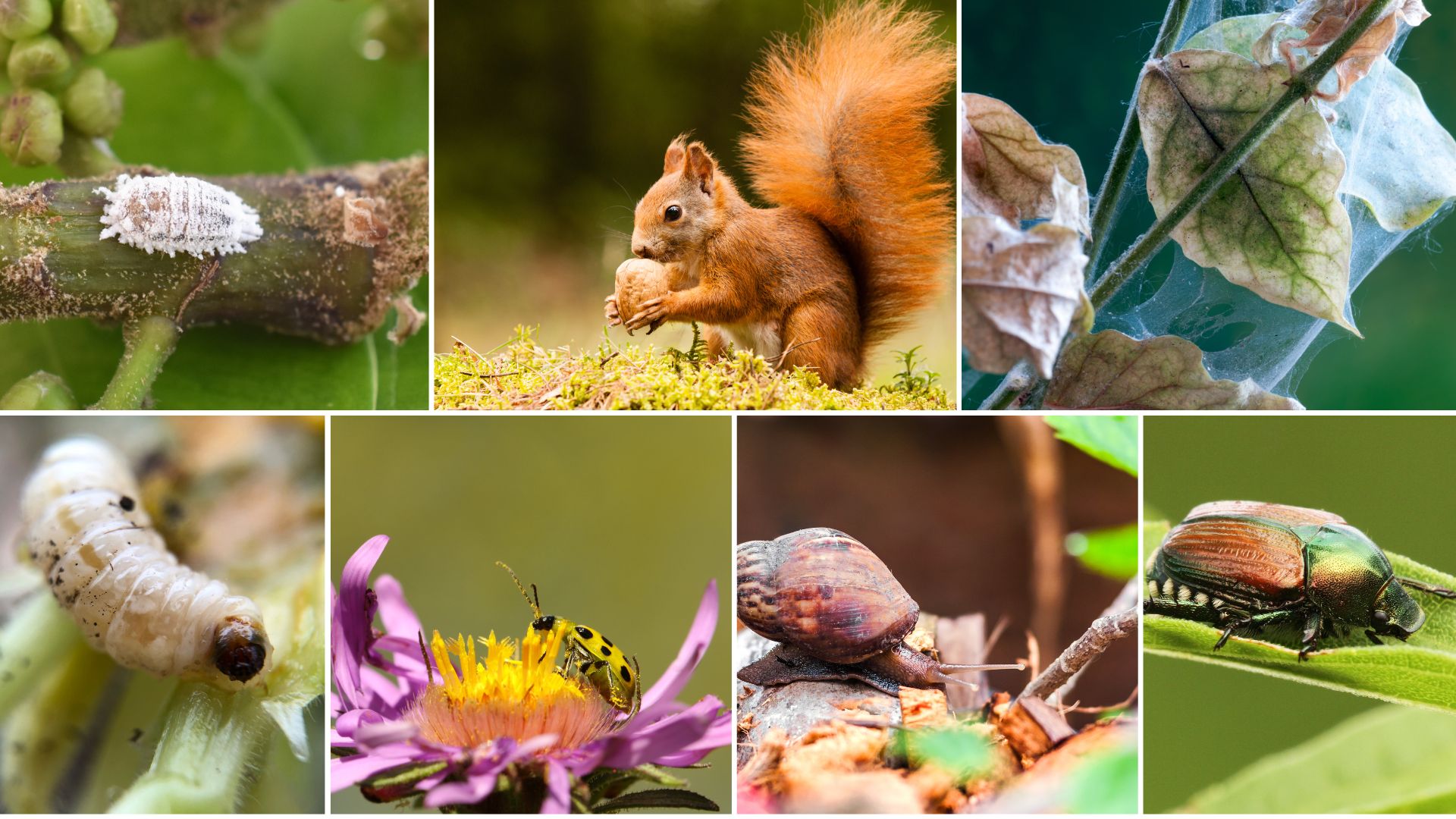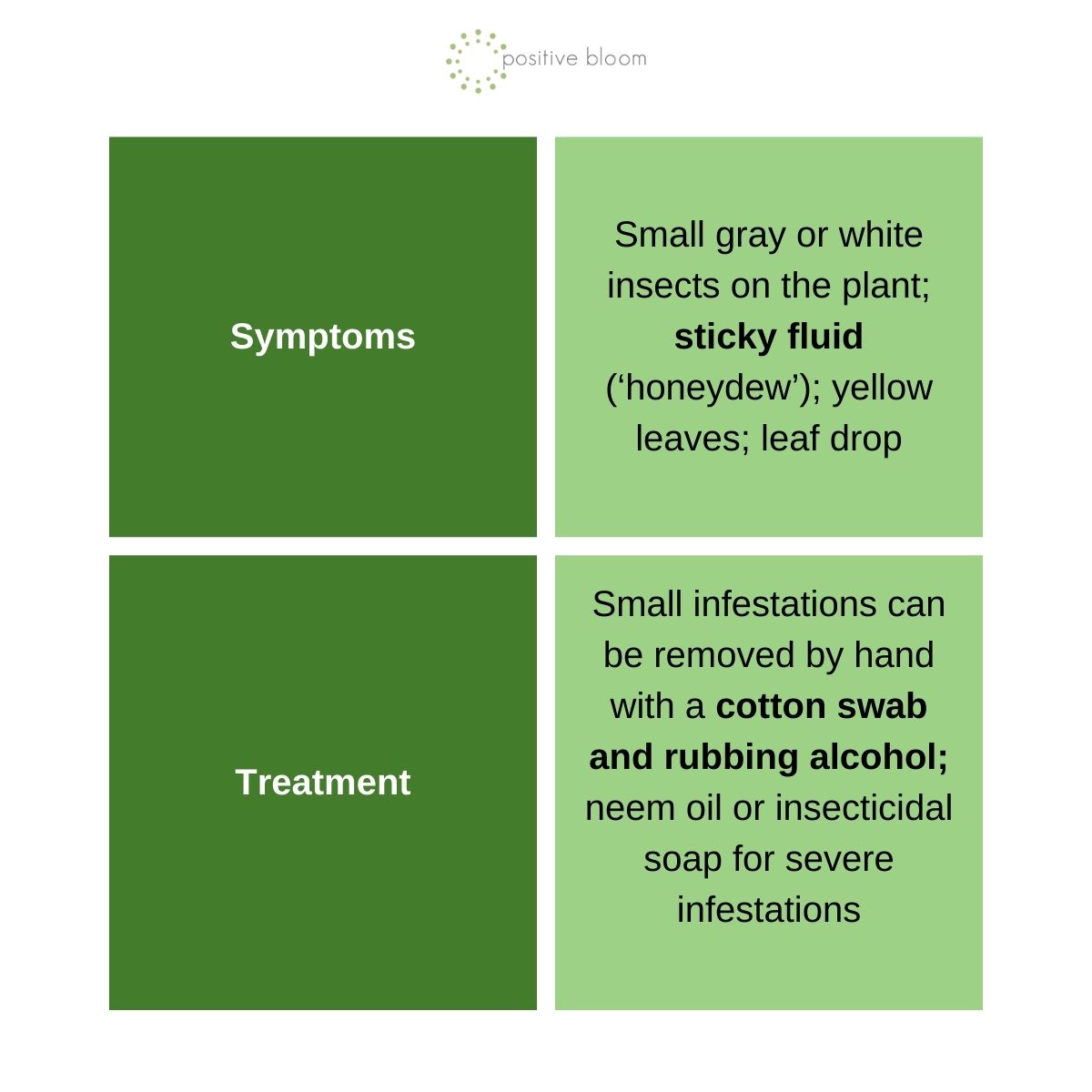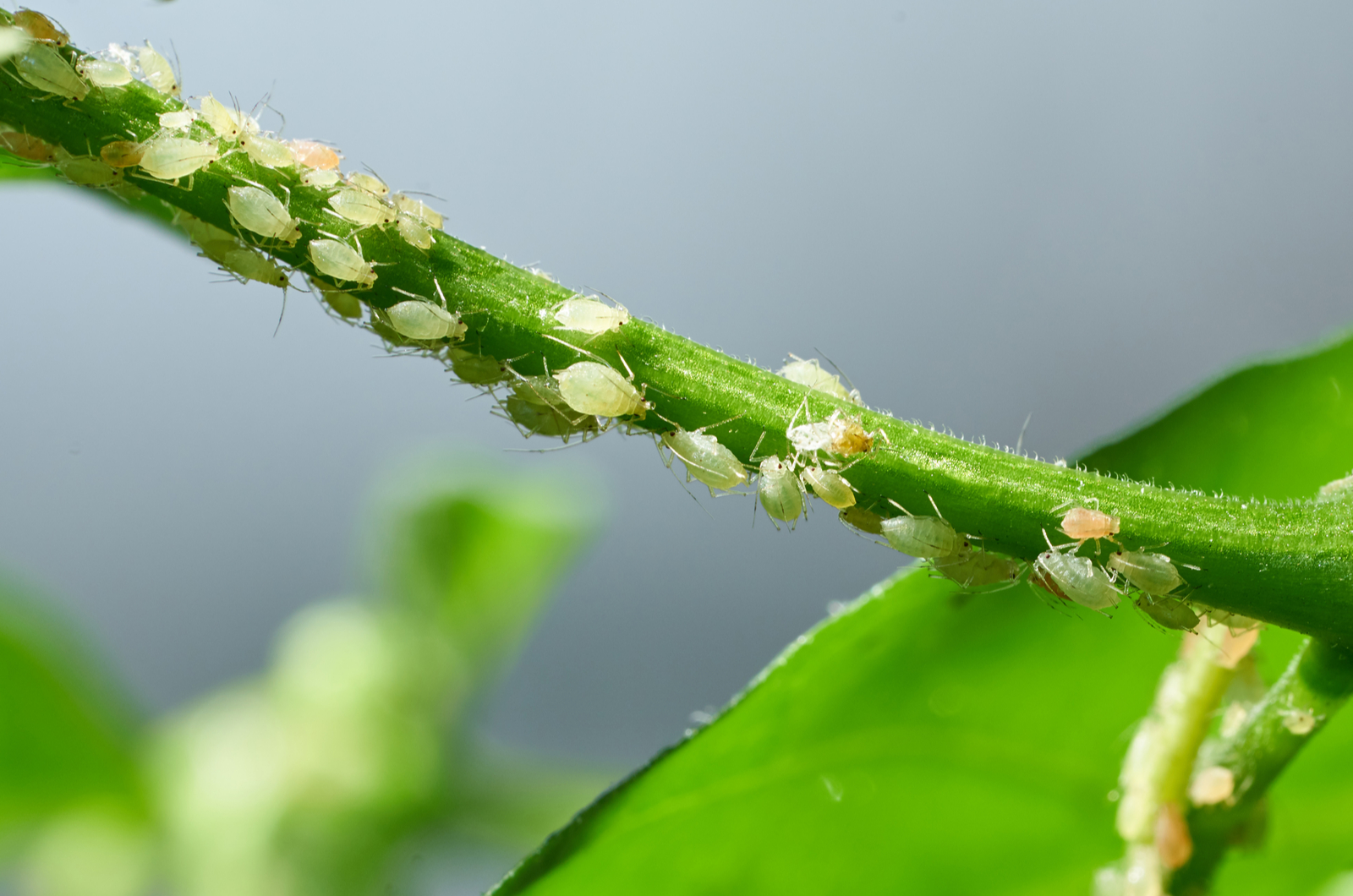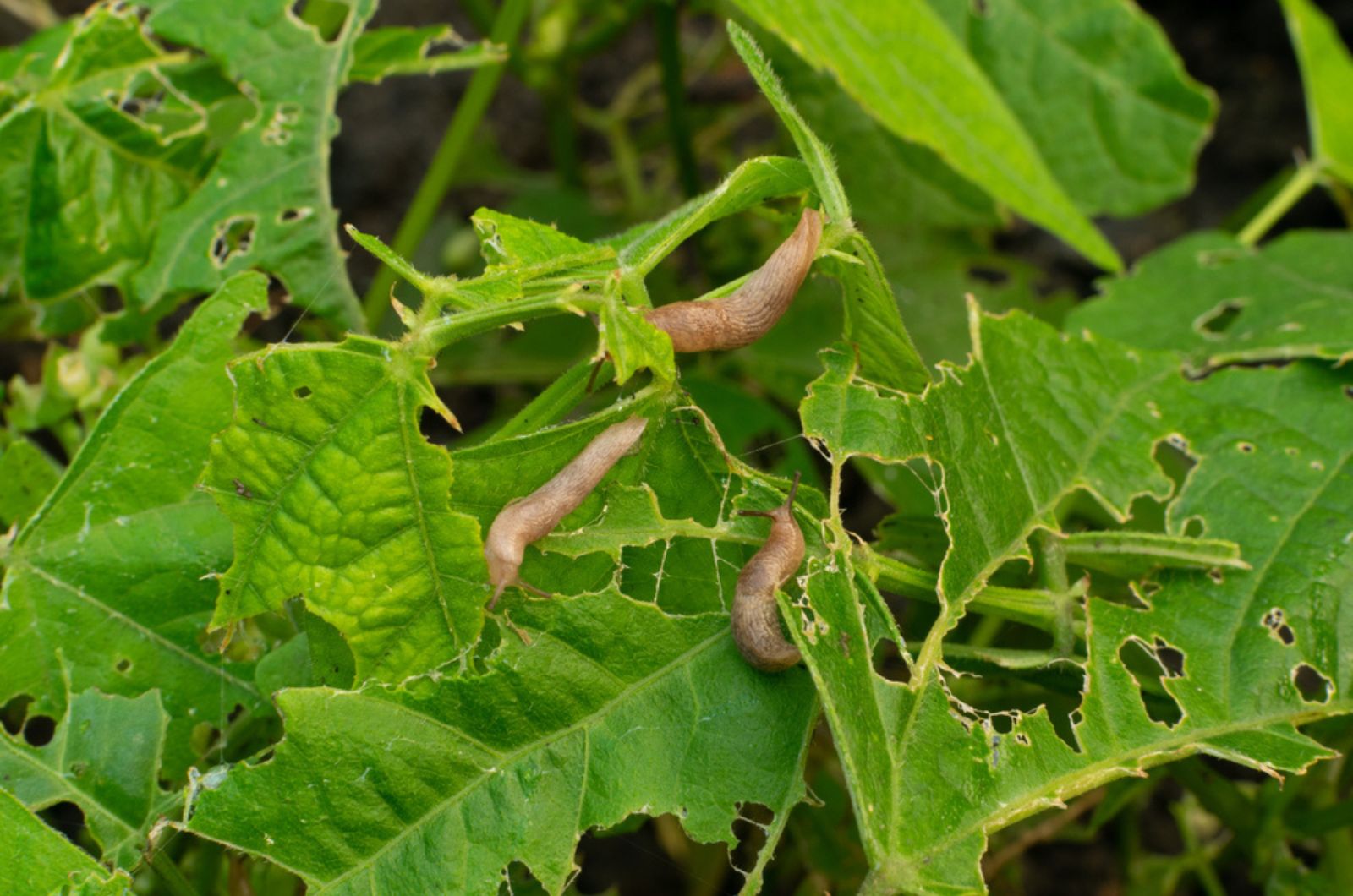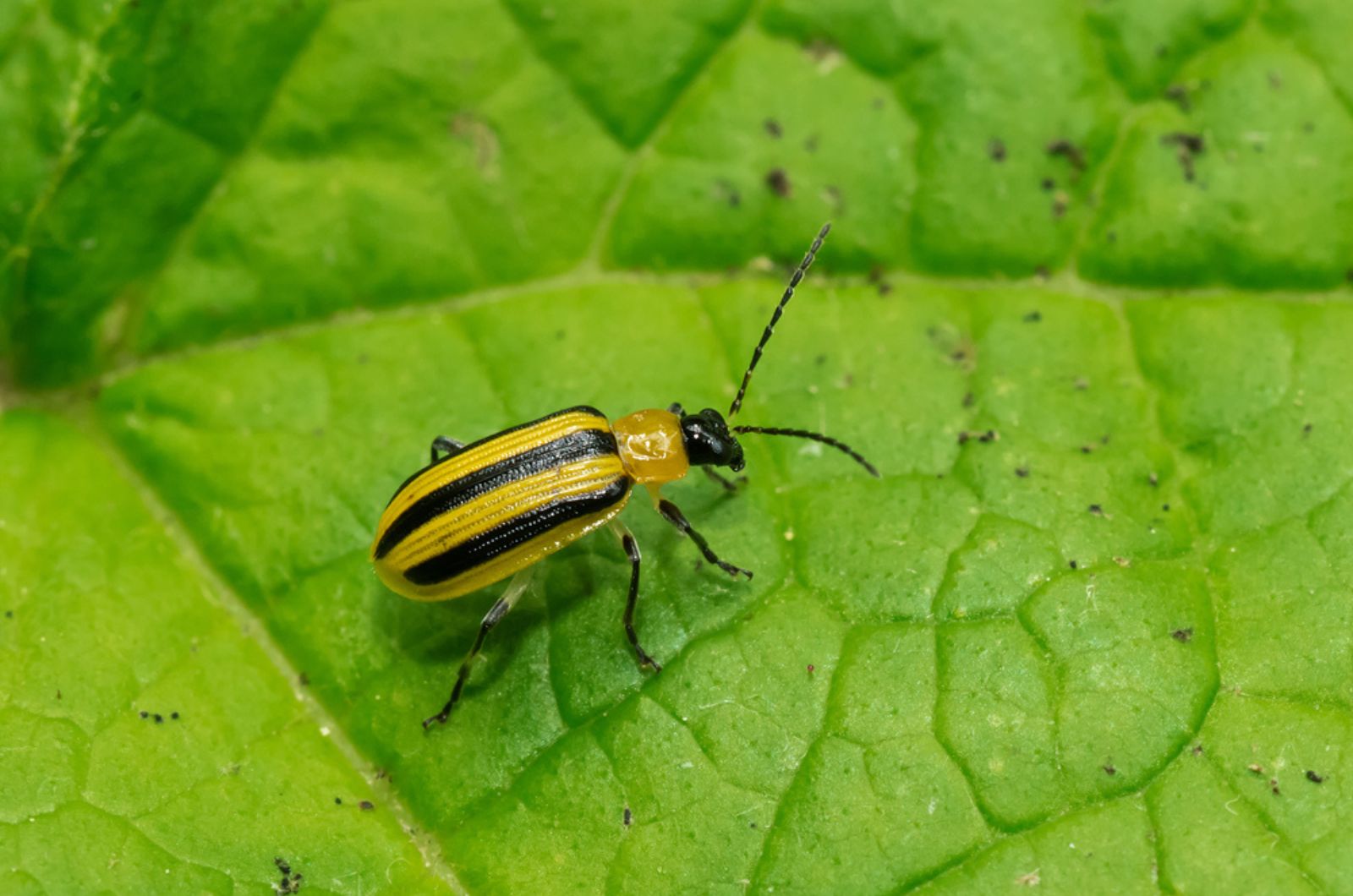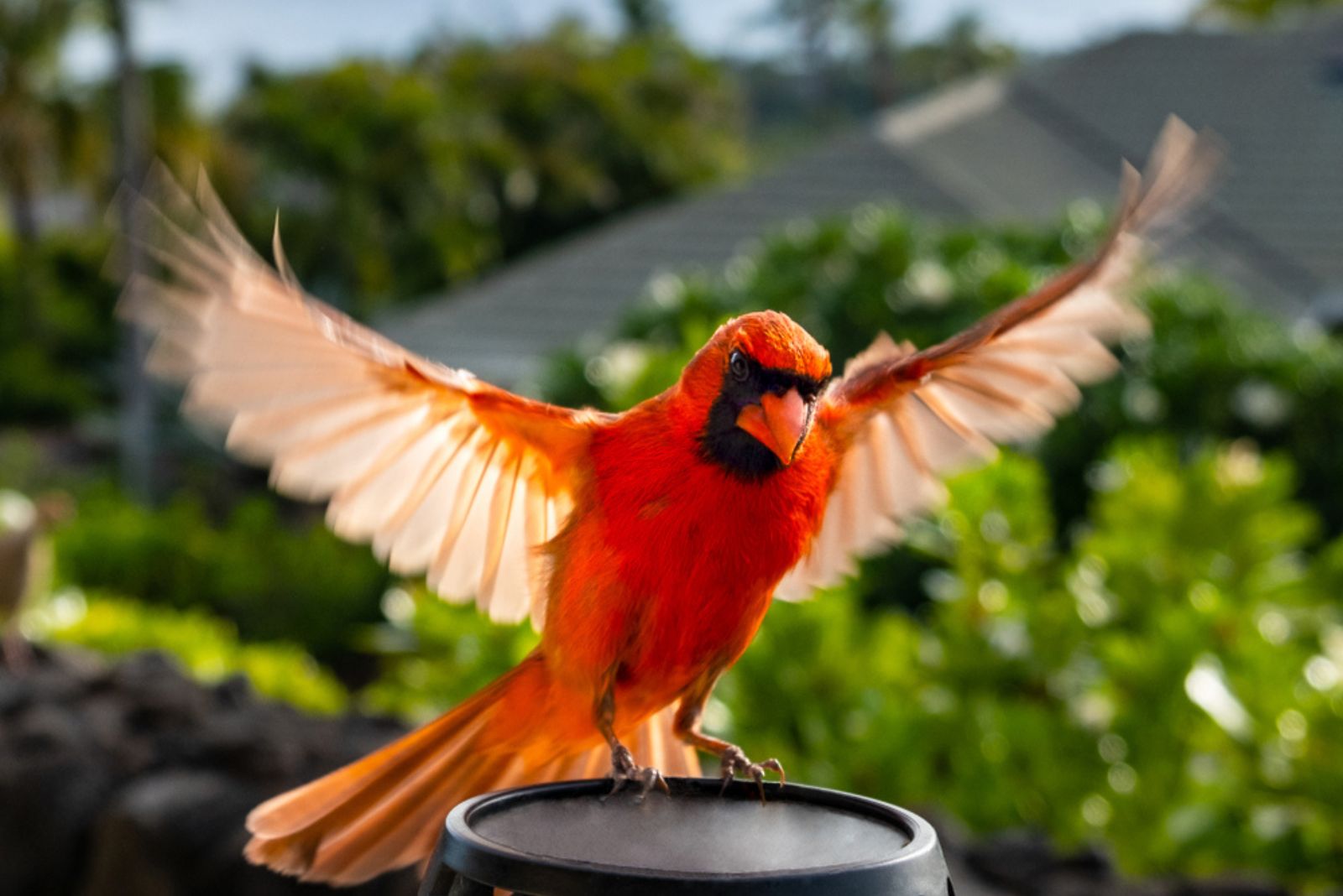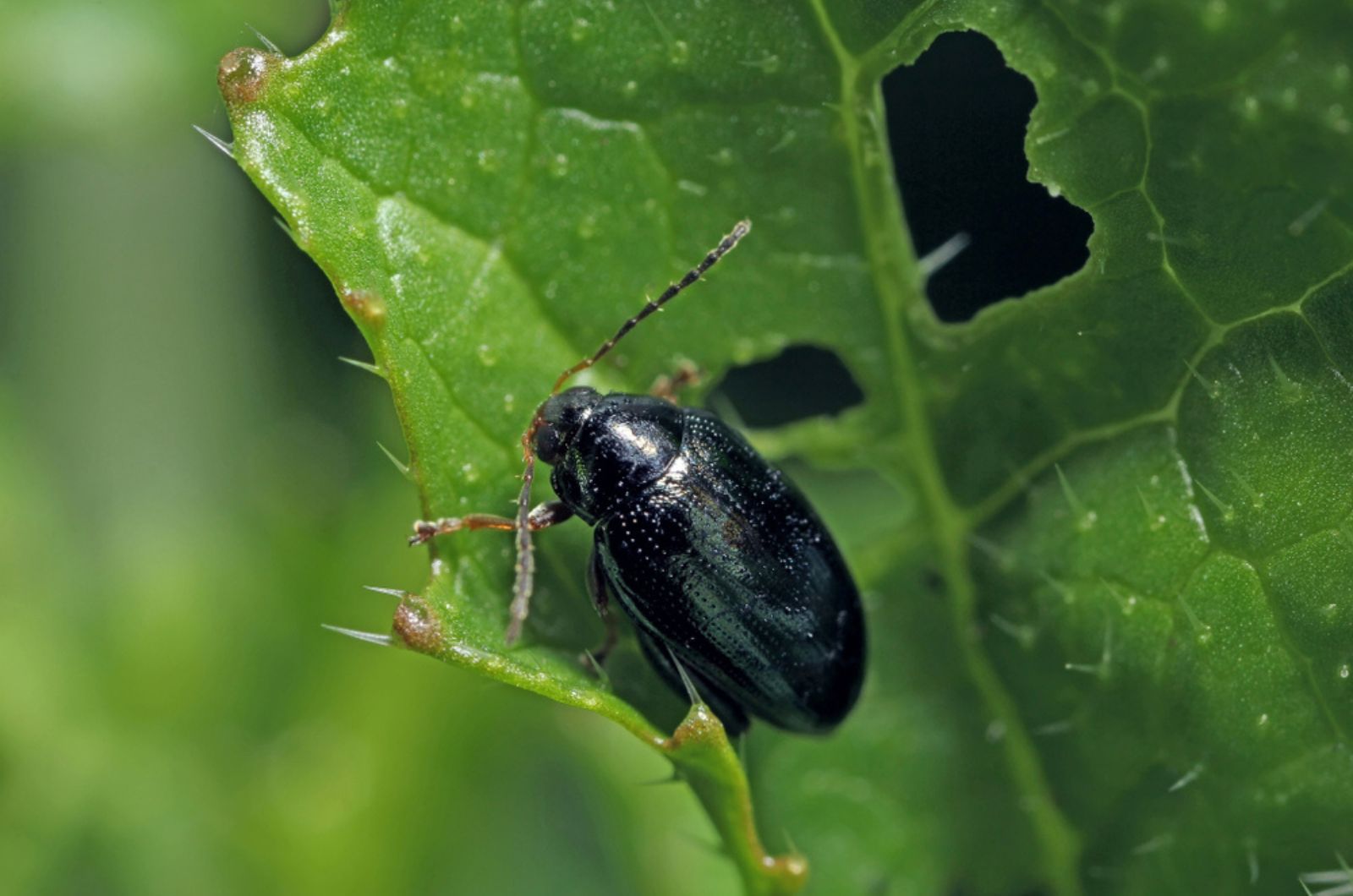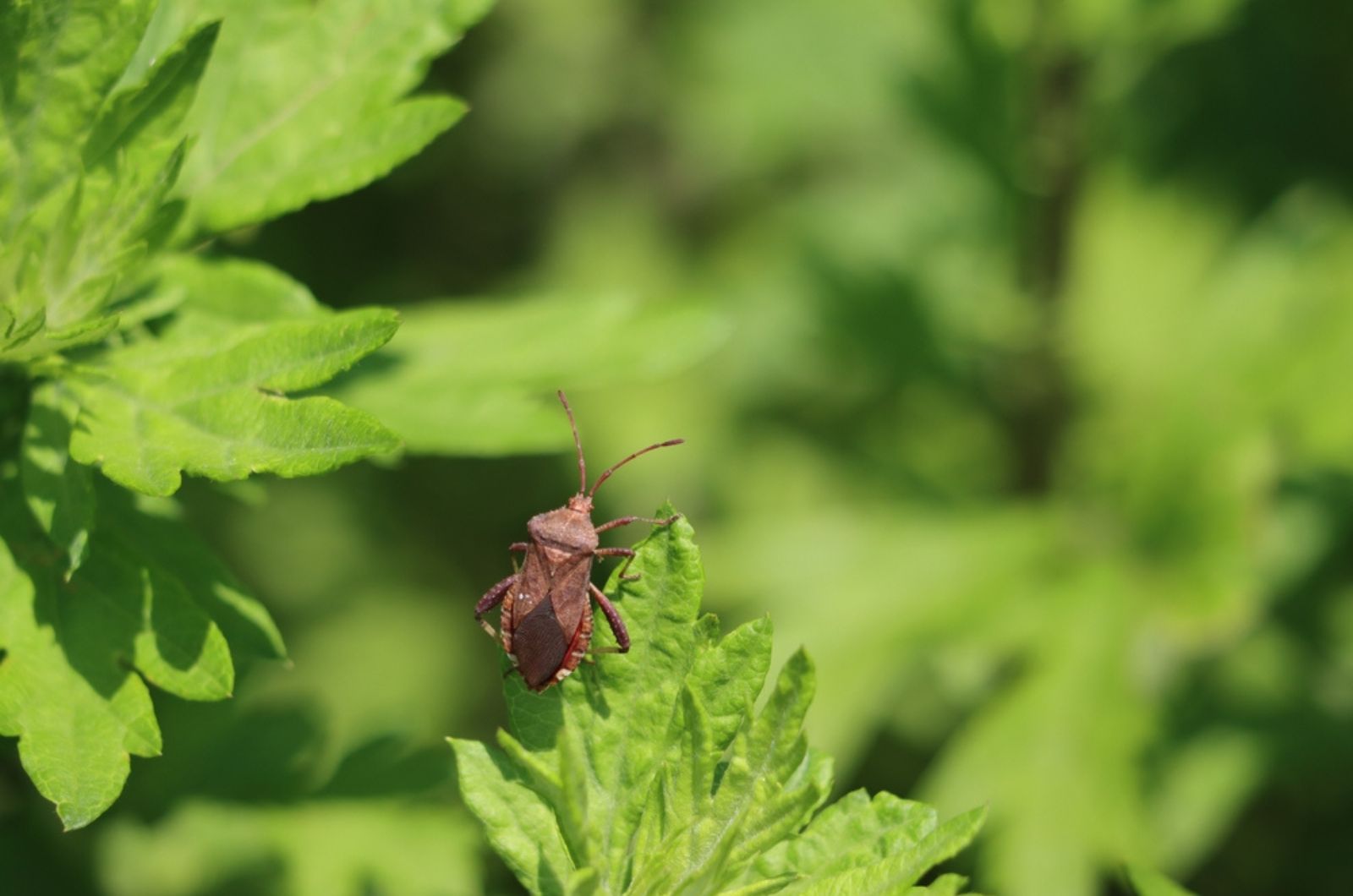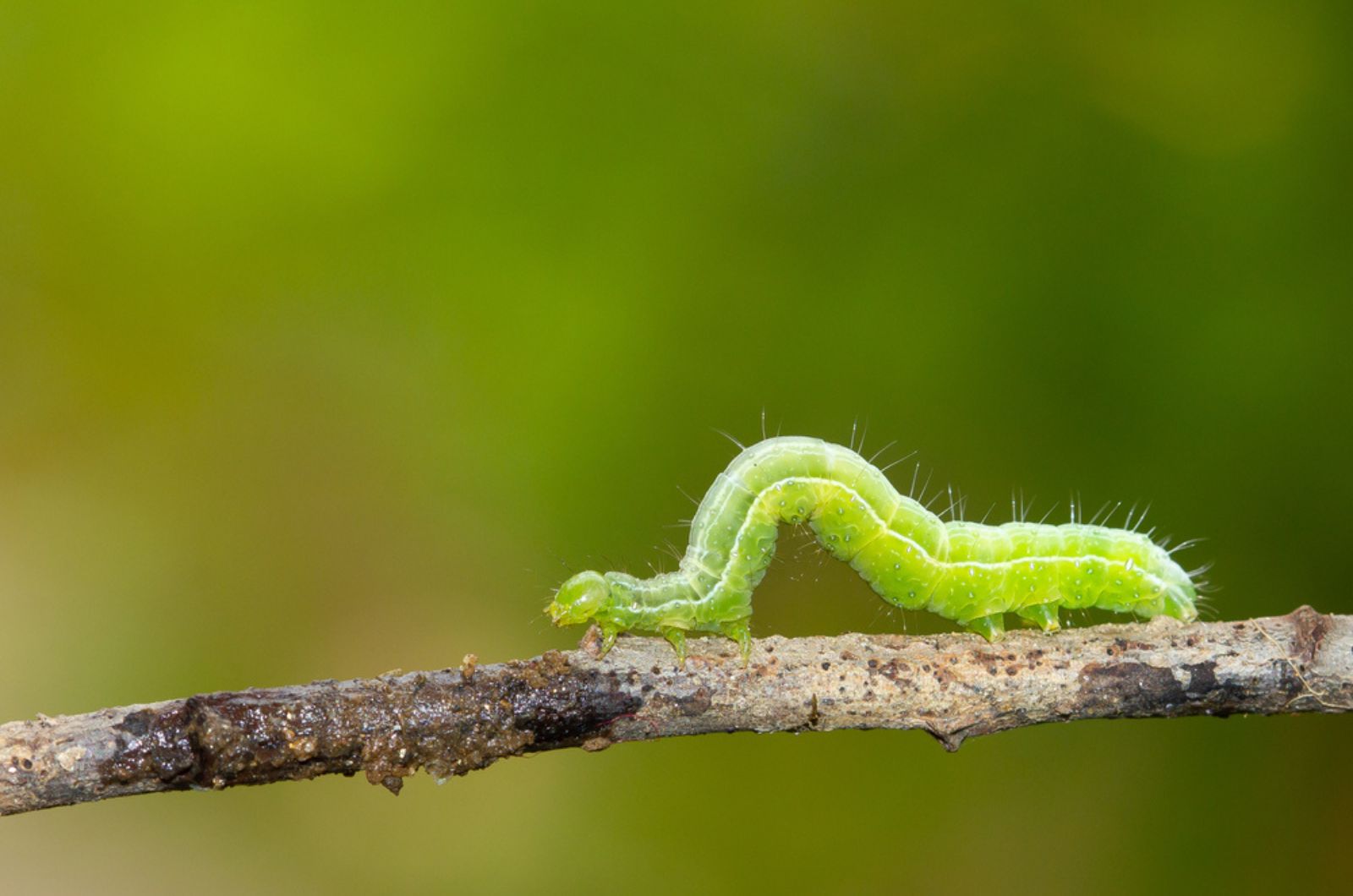Garden pests are every gardeners’ nightmare.
They come into your garden and completely ruin your plants and crops. Larger pests like deer and rabbits munch away leafy greens, while aphids and mealybugs are the microscopic ones that devour your plant without you even noticing it!
So, in order to protect your plants, you must be able to identify the pests and prevent ant infestations. Prevention is better than cure, am I right?
In this article, we are going to mention common garden pests, what their symptoms are, and how to treat them. Let’s dive in!
1. Mealybugs
We are starting off with frequent hibiscus pests, mealybugs. These appear in both indoor and outdoor plants. They are tiny, soft-bodied insects that are hardly visible to the naked eye.
Mealybugs usually form clusters at stem joints and on the undersides of leaves, though they also eat fruits and flowers. You might notice a sticky fluid that mealybugs excrete – honeydew, which ants feed on.
So, if you spot ants crawling on your plants, you are probably dealing with a mealybug infestation!
Yellowing of the leaves followed by leaf curl and leaf drop are also signs of mealybug infestation. If you don’t treat your plant, it will eventually die and mealybugs will spread to the nearby plants.
2. Squirrels
Symptoms: large chunks on leaves and fruits; also stems, branches, and twigs
Treatment: critter-proof cage; squirrel-repellent plants; capsaicin sprayers
Although adorable, squirrels can create havoc in your garden, especially if you grow delicious fruits and veggies!
If you notice them climbing on the trees or running around your garden, they will definitely find their way to your vegetable garden. They can also dig holes in the ground to search for freshly planted seeds.
These cute critters also like munching on tomatoes, strawberries, and apples; so, if you have a squirrel issue in your garden, consider protecting these with a critter-proof cage. Otherwise, you can try planting some squirrel-repellant plants like marigolds or hyacinths.
3. Spider Mites
Symptoms: leaf discoloration; curly leaves; webbing on plants
Treatment: spray plant with a jet of water; introduce predatory insects
If you think of spider mites as microscopic spiders, you are completely right! They have 8 legs like spiders, but are 1/50 of an inch long (hardly visible!). There are different types of spider mites; for example, cat palm spider mites, which specifically attack palms (both indoors and outdoors).
Spider mites can feed on anything in your garden – from flowers, trees, and shrubs to veggies and fruits. They suck the juices out of plants and leave them bone dry. Do you think that spider mites can live without plants?
If the answer is yes, they surely don’t want to!
Leaf discoloration, curly and deformed leaves, along with tiny webbing on the plant’s leaves and stems are often signs of spider mites. You can spray them with water or introduce predatory insects, but it’s best to keep your plants in top-notch health.
4. Deer
Symptoms: missing plants; deer hoof prints; top of the plant damaged
Treatment: fences; deer-repellant plants; deer-repellant sprays; predatory urine
Deer are definitely not on the invisible pest spectrum – once you have deer wandering around your garden, you’ll hardly miss them!
These are herbivores that feed on grasses, flower buds, stems, flowers, and leaves. If you notice that your entire plant is gone, then deer are most likely to blame.
To get rid of them, consider installing a tall fence or using sprays that deer don’t like (make sure to reapply after rain). Deer-repellant plants also work very well.
You can also check: These Natural Deer Repellents Are Already Sitting In Your Kitchen Cabinet
5. Snails & Slugs
Symptoms: slime trail; irregular holes in soft parts of the plant
Treatment: hand-picking; traps; organic snail or slug bait; copper strip barrier
Snails and slugs are those slimy pests that usually come to the garden after the sun goes down. In the meantime, they hide under rocks, logs, or piles of leaf debris. These critters are usually gray or brown and they grow a few inches long.
Using their rasping mouths, snails and slugs feed on plant matter – they leave irregular holes in the soft parts of the plant. Even if you don’t see them but notice a slime trail, know that they are out there!
You can either hand-pick them or use traps and bait to keep them away from plants. You can also use a copper strip barrier (only effective for raised beds).
Check out: Discover The Secret To Keeping Slugs Off Your Plants
6. Vine Borers
Symptoms: wilting leaves; holes on the stem; mushy frass on stem
Treatment: cut the stem and remove the caterpillars; inject Bt; cover vines with soil; use row covers
Vine borers are unnoticeable pests that devour your plants from within. Their larvae look similar to caterpillars or grubs. They eat your garden plants from the inside out by digging into the vines and fruits.
These sneaky critters usually attack cucurbit crops like melons, cucumbers, summer and winter squash, gourds, and pumpkins.
Vine borers create a small hole in the stems. The holes may be a few millimeters in diameter so you can still spot them. Check for holes if you notice wilting leaves on the stems.
If you examine the hole carefully, it can just appear to be a hole in the hollow stem of the vine. In most cases, you will be able to see a caterpillar hiding inside and eating your plant from within. They even excrete a mushy frass at the entrance of each hole.
Each hole you notice along the vine represents a hungry vine borer caterpillar if there are numerous borers present in a single vine, since each borer will have its own individual hole. Now, you should cut the stem and use tweezers to remove the borer.
However, you can also inject Bacillus thuringiensis or cover vines with soil. You can also use a floating row cover at the beginning of the season to prevent flying moths laying eggs on your vining plants. Once the plant starts flowering, remove covers for pollinators.
7. Cucumber Beetles
Symptoms: chewed holes in fruits and leaves; plant wilting
Treatment: row covers; disease-resistant varieties; spinosad spray
Cucumber beetles are not just fans of cucumbers – they will also eat other parts of the plant, like leaves, roots, fruits, and flowers. These usually grow up to ⅓ inch long and have a yellowish green color with black stripes or spots.
Yellow cucumber leaves are often signs of an infestation. However, you can easily spot them munching on your plants!
Although they prefer cucumbers, these beetles can also feed on melons and cucurbits. To make things even worse, they can also transmit bacterial wilt, which can completely destroy your plants.
If you notice that the plant is wilting, it’s best to remove it completely to prevent the bacteria from spreading to neighboring plants.
To get rid of cucumber beetles, opt for disease-resistant varieties and start them later in the season. You can also use floating row covers for younger plants and also throw away any leafy overwinter debris.
8. Japanese Beetles
Symptoms: walking on the plant; skeletonized leaves
Treatment: hand-picking; spraying water; planting trap crops
Here is yet another beetle that can be detrimental to your garden plants!
Adult Japanese beetles have a metallic green or bronze color, and they usually grow about ½ an inch long. They feed individually or in large numbers on grape vines, fruit trees, and roses. Japanese beetle grubs live in soil and they feed on plant and grass roots.
You can easily spot them in groups wandering all over your plants. Once they get to the leaf, they will eat it entirely, leaving behind nothing but browned veins!
Then, they simply move on to the next leaf. These critters can do significant harm but they can rarely destroy an entire plant.
Hand-picking is one effective removal method. You can also spray them with a hard stream of water. I would recommend you avoid growing plants prone to Japanese beetle infestation, like cherries, roses, grapes, or apples.
Pick trees such as maple, holly, or dogwood and you won’t have any issues with these critters. Beneficial nematodes in the soil can also help remove grubs. Some gardeners use a milky spore powder though it takes years to become established and effective for preventing grubs!
9. Birds
Symptoms: holes in the ground; eaten berries and crops; holes in trees
Treatment: critter cage; floating row covers; bird-scare items
Although most of us love fairytale gardens with birds flying around in them, in most cases, that fairy tale won’t have a happy ending. Birds are critters that can eat your berries, destroy your crops, and create holes in your pretty trees!
Ground-foragers are able to dig up the seeds that you have just planted. Woodpeckers drill holes in trees or any wooden structure around the garden. Fruit-eating birds steal your berries and grapes, while larger birds like crows feed on melons and corn.
Now, you can protect your seeds with floating row covers. Use critter cages for smaller plants. Avoid putting up a bird feeder next to your garden plants. Use fake owls or rubber snakes to scare the birds away.
If you have issues with magpies, here’s how to get rid of them!
10. Aphids
Symptoms: pests on undersides of the leaves; honeydew on the leaves, leaves curling and yellowing; deformed flowers; plant wilting
Treatment: introduce predatory insects; spray with a jet of water; use neem oil or insecticidal soap; epsom salt
Every gardener has probably dealt with an aphid infestation. Aphids are tiny insects that suck on the plant’s juices. These usually move in colonies. Their colors vary between green, white, yellow, pink, gray, and brown.
These pests will attack everything that comes their way, including veggies, flowers, perennials, annuals, fruits, houseplants, and shrubs!
If you notice colonies settling in on the underside of the plant’s leaves, then you are probably dealing with aphids. They also leave a sticky honeydew as they feed. Yellowing and curling of the leaves appear once the infestation is severe.
Not treating an aphid infestation will only lead to the plant wilting and dying. Sometimes honeydew can attract fungi, so you will notice gray or black mold on the plant’s leaves and stems.
To get rid of these, introduce predatory insects like ladybugs. You can spray them with water if the infestation is not too severe. Otherwise, use neem oil or insecticidal soap to get rid of aphids.
11. Flea Beetles
Symptoms: shothole patterns in plant’s leaves; brown and dead patches on the leaves; losing entire leaves
Treatment: plant them later in the season; row covers for younger plants; use insecticidal soap; introduce beneficial nematodes
Flea beetles are small, dark-colored pests that usually attack Brassicas, eggplants, and arugula. However, they don’t mind munching on leaves from beans, potatoes, turnips, tomatoes, radishes, and other Cabbage family members.
Tiny shothole patterns on the leaves are first signs of flea beetle infestation. They make tiny holes throughout the entire leaf, not just margins like caterpillars. These little bugs can nearly entirely defoliate some plants, including eggplants and turnips.
Flea beetles can often be spotted jumping from one leaf to the other. Large holes and brown patches are signs of severe infestation. The bacteria that causes bacterial wilt can also be spread by flea beetles, in which case the entire plant will grow ill and perish.
If you are dealing with flea beetles, here’s a useful video:
12. Moles
Symptoms: tunnels in the soil; yellow and dry plants
Treatment: watering the burrow; use raised beds; use traps; grow castor beans; fencing below the soil’s surface
Yet another mammal pest that can destroy your plants and lawn. Moles dig tunnels and burrows in the soil when looking for worms and grubs. Although they won’t eat your plants, they will disrupt their roots as they dig.
If you notice any tunnels pushing up the soil and grass, then you are probably dealing with moles. To keep moles at bay, you might consider growing castor beans or using no-kill traps.
Since moles like dry soil, you might try flooding burrows with water to flush the mole out. What you can also do is try to catch the mole, place it in a bucket, and transport it a few miles away – the further the better!
Raised bed gardening is also an option if you live in a region where moles are common garden pests. Hardware cloth, a metal mole, or gopher mesh will stop moles from entering your garden bed from the bottom.
13. Squash Bug
Symptoms: insects on the both sides of the leaves; leaves turn yellow and brown
Treatment: hand-picking; horticultural oil; remove insect eggs
Squash bugs are insects with brown, flat bodies that can grow up to an inch long. Although they have wings, you will most likely spot squash bugs walking on your plants, fences, or poles.
During the day, these insects feed on melons, cucumbers, pumpkins, and squashes, sucking on their juices and leaving plants dry.
You will also easily spot their eggs – check the undersides of the leaves regularly. Infected plants will have limp and weak leaves that start yellowing and browning. Small and young plants are more prone to squash bug infestation and they can die quicker.
Pick squash bugs with your hands and put them in soapy water. If you notice egg clusters, scrape them with a butter knife and put them into soapy water. You should also remove leafy debris from the last season.
If infestation is severe, apply horticultural oil, especially when dealing with eggs. Remember to check your plant regularly!
14. Rabbits
Symptoms: round droppings on lawn and garden; consumed leaves; missing plants
Treatment: put up a fence; use rabbit-deterrents; grow plants in tall raised beds; put wire critter cages; add coffee grounds
Here is yet another absolutely adorable pest that can devour your veggies in the garden. These herbivores feed from dawn to dusk and are mostly found in lawns, parks, woodlands, gardens, and bushy areas.
If you spot any rabbits jumping around in your area, then you should consider protecting your plants. They eat everything that comes their way, including tall flowers, stems, leaves, leafy veggies, etc.
First, you should put up a 2-foot tall fence around your plants – you can also use a 3-foot wire and bury it because rabbits can dig and squeeze under the fence to enter your garden. Consider growing plants in tall raised beds.
Get rid of brush piles and weed patches. You can also add coffee grounds, spray rabbit deterrents, use traps, and grow rabbit-repellent plants.
15. Caterpillars
Symptoms: chewed holes in the leaves; defoliated plants; frass on the plant
Treatment: hand-picking; spraying Bt; row covers; companion plants
The last pest on our list is caterpillars. Although they turn into beautiful butterflies that are super beneficial to our gardens, some caterpillars can still create havoc. This is why it is important to identify what kind of caterpillars you are dealing with.
For instance, tomato hornworms are typically seen as pests, yet we gladly share parsley leaves with swallowtail butterfly caterpillars.
They will feed on the plant’s leaves and leave some completely defoliated. You can hand-pick them – don’t worry, they look scary but won’t do you any harm!
Brassica-eating caterpillars are removed by spraying Bacillus thuringiensis (make sure not to spray flowers). You can also use row covers to prevent adult caterpillars from laying eggs in young plants. Grow some companion plants that can repel these kinds of insects.
Also read: What Are Tomato Hornworm Eggs And How To Deal With Them?

